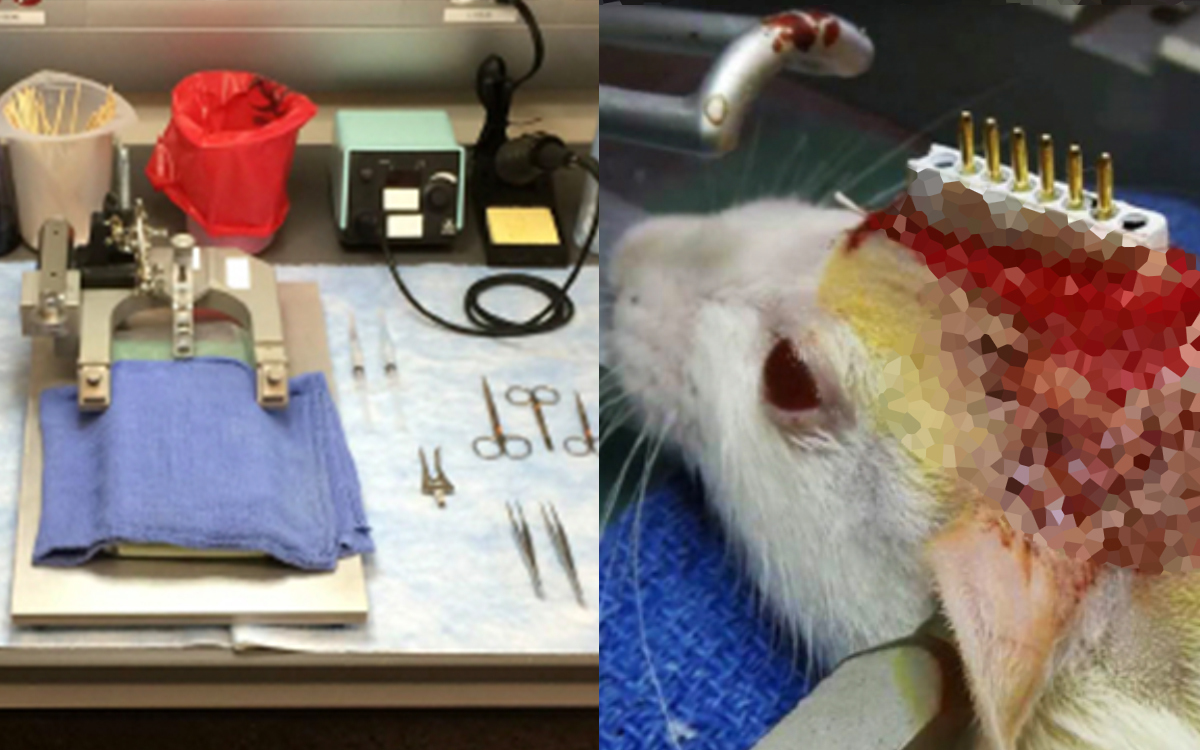
One Voice is requesting a ban on a very painful experiment on more than 27,000 animals
One Voice is referring to the Paris Tribunal against a severely painful animal testing project that provokes epileptic fits in rats
On 14 December, the urgent applications judge from the Paris Administrative Tribunal, referred to by One Voice, ruled on the request to suspend the authorisation of the animal testing project. The targeted project was authorised on 10 July 2022 by the Ministry of Research, and planned to subject more than 27,000 rodents to ‘severe’ experiments which would artificially induce real epileptic seizures through audio shockwaves, injections, or electric shocks in the eyes or brain, several times over for some of them.
When you know how sociable and creative these small mammals are, your heart sinks at the idea of what they endure in laboratories. This is no exception. Researchers will induce epileptic seizures on 8700 mice, 17,730 rats, and 1000 gerbils. How?
After having had holes made in their skulls and their brains filled with electrodes and various objects, each of these individuals will have to endure electric shocks or be exposed to stressful sounds at a very high volume until it causes a loss of consciousness and convulsions. In the United States, in a similar procedure, rodents were enclosed in a box for three whole minutes with a domestic security alarm set at 110-120 dB – which is very loud, especially for a mouse. Methods are as varied as they are horrifying.
One Voice is asking for the project to be cancelled
We discovered this project after its publication on the ALURES database, which lists animal testing project summaries approved within the European Union since 2021.
On 9 September, we asked the Ministry of Research to send us the necessary documents to better understand the project. Two months later, they simply sent us the authorisation report and the sheet containing a ‘favourable’ mention from the ethical committee. The Association has therefore filed an emergency interim suspension proceeding and a cancellation plea at the Paris Administrative Tribunal.
An illegal project…
The regulations are clear on this subject: the reuse of animals who have been subjected to an initial severe procedure is supposed to be forbidden. What’s more, the committee who assessed it came down against ‘replacement’ (one of the ‘three Rs’ in animal testing).
Furthermore, the project summary that we obtained only mentioned, with regard to the efforts made to reduce the suffering of the animals used, administering an anaesthetic gel on rodents’ eyes and post-operative painkillers. This is the bare minimum required by regulations, and this still results in them being classified as ‘severe’ procedures – the highest level of suffering in the European Union regulation framework.
…so it is possible for it to happen!
Still, according to the project summary, the aim of these tests is to verify the toxicity and efficacy of new pharmacological substances. But when we know the mediocre track record of toxicity tests on animals to predict human responses to medications, there is a lot to doubt about the benefits of this new project.
The laboratory definitively maintains that, despite the existence of neuronal cultures or the possibility of working on pieces of brain from deceased epileptic people, the efficacy of substances ‘must’ be shown on animals. No need to argue apparently. But for One Voice, the ‘replacement’ of animals with other methods would be the ideal, an ideal also aimed towards by the European regulation that implemented the 3 Rs.
In addition, the laboratory presents reuse of the same animals for several epileptic seizures as a ‘reduction’ method for the number of animals used. Or how to artificially reduce the figures by inflicting repeated suffering on the same individuals… this is where we go back to where we started: it is banned.
The hearing will be held on 14 December at 3pm at the Paris Administrative Tribunal.
To go further and discover different types of research and levels of animal suffering in French laboratories, you can consult our recently published sitededicated to analysing ministerial data.
Warning: the content of the below images is difficult to look at.
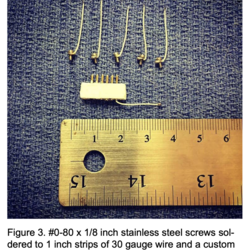
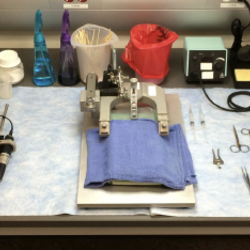
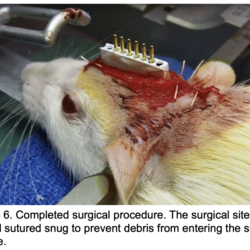
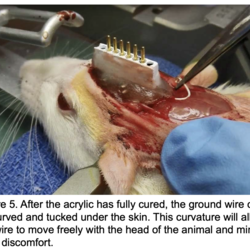
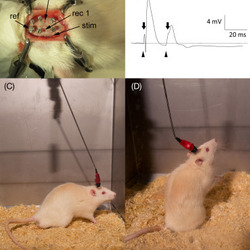
The visual images at the top of the article do not belong to One Voice and come from Stereotaxic implantation of EEG electrodes in the rat.
Translated from the French by Joely Justice